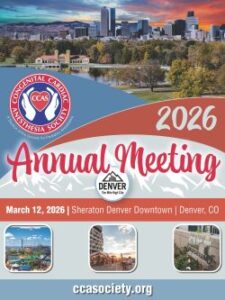Author: Anila B Elliott, MD - University of Michigan - C.S. Mott Children’s Hospital
A 2-month-old, 3.5kg boy with hypoplastic left heart syndrome (HLHS) palliated with ductal stenting and pulmonary artery banding whose postoperative course was complicated by deep vein thrombosis (DVT) now presents for a Norwood operation. An initial dose of 600 units/kg heparin was administered with a subsequent activated clotting time (ACT) of 300 seconds. An additional dose of heparin was administered, and the ACT remained 305 seconds. What is the MOST effective course of action to increase the ACT to a level appropriate for cardiopulmonary bypass?
EXPLANATION
Heparin is currently the gold standard for anticoagulation to prevent thrombosis during cardiopulmonary bypass (CPB) due to its efficacy, cost-effectiveness, and ability to be reversed.1 Unfractionated heparin (UFH) works by binding to antithrombin (AT), thereby enhancing its activity to inhibit thrombin (factor IIa), factor Xa and other clothing factors.2 However, the anticoagulant effect of UFH can vary significantly among different patient populations and age ranges.
Activated clotting time (ACT) has been in use since the 1960s to monitor the anticoagulant effects of heparin.3 Due to the pharmacokinetics of heparin, higher doses result in an increase in intensity and duration of the anticoagulant effect with renal elimination playing a role in clearance. Most institutions require an ACT level of 400-480 seconds to safely initiate CPB.
Since heparin requires AT to work effectively, a patient with AT deficiency will have a reduction in heparin effect.4 In the congenital cardiac patient population, particularly infants, lower concentrations of AT increase the risk of heparin resistance. Congenital heart disease is also associated with coagulation abnormalities.5 Cyanotic lesions can lead to chronic hypoxemia, stimulating erythropoiesis, which may suppress platelet production. Increased fibrinolysis has also been reported in cyanotic patients. Poor cardiac output, hypoxemia and chronic passive congestion of the liver can also result in underproduction of clotting factors, specifically those that are vitamin K-dependent (II, VII, IX, X). Patients with HLHS are particularly impacted by factor deficiencies with deficiencies reported in factors II, VII, IX, X, V, VII and protein C and S, which can be most pronounced prior to first-stage palliation.
Heparin resistance is defined as failure of appropriate weight-based doses of heparin to achieve a target ACT.2 Inadequate therapeutic effect of heparin can lead to thrombosis of the CPB circuit, a catastrophic event. Sub-therapeutic heparin levels can also trigger low levels of coagulation cascade activation, resulting in consumptive coagulopathy and excessive bleeding after heparin neutralization. It has been reported that heparin levels can decrease by 40-60% within 80 minutes, with recommendations to re-dose with 1/3 to ½ the original heparin dose, which is often done while on CPB.2
Treatment options for heparin resistance include additional heparin, fresh frozen plasma (FFP), and AT concentrates.1 FFP contains approximately 1 IU of antithrombin per 1mL, but studies have shown that even two units of FFP may be insufficient to improve heparin responsiveness in adults. AT concentrates are an off-label alternative that have been shown to be more effective clinically. Given the paucity of data available in pediatric patients, dosing ranges are variable, with the most clinically efficacious studies showing 50units/kg to be clinically effective, depending on ACT after initial dose of heparin and goal ACT.3
This patient likely has low levels of AT given their age, but also faces the risk of acquired AT deficiency from anticoagulant use. In this 3.5kg infant, approximately 175mL of FFP (more than half the patient’s blood volume) would be needed to provide the equivalent amount of AT in a 50units/kg dose of concentrate.4 Therefore, although institutional practices may vary, the most EFFECTIVE treatment to increase ACT would be to administer AT concentrate, which is answer C.
REFERENCES
1. Avidan, MS., Levy, JH., Scholz, J. et al. A phase III, double-blind, placebo-controlled, multicenter study on the efficacy of recombinant human antithrombin in heparin-resistant patients scheduled to undergo cardiac surgery necessitating cardiopulmonary bypass. Anesthesiology. 2005; 102: 276-284
2. Finley, A., Greenberg, C. Heparin Sensitivity and Resistance Management During Cardiopulmonary Bypass. Anesth Analg 2013; 111(6): 1210-1222. DOI: 10.1213/ANE.0b013e31827e4e62
3. Harnish, J., Beyer, K., Collins, J. Anticoagulation strategies in pediatric cardiopulmonary bypass, weight-based vs concentration-based approaches. J Extra Corpor Technol 2022; 54(2): 153-160
4. Jones, AJ., O’Mara, KL., Kelly, BJ., et al. The impact of antithrombin III use in achieving anticoagulant goals in pediatric patients. J Pediatr Pharmacol Ther 2017; 22(5): 320-325
5. Stockton, WM., Padilla-Tolentino, E., Ragsdale, CE. Antithrombin III doses rounded to available vial sizes in critically ill pediatric patients. J Pediatr Pharmacol Ther 2017; 22(1): 15-21
